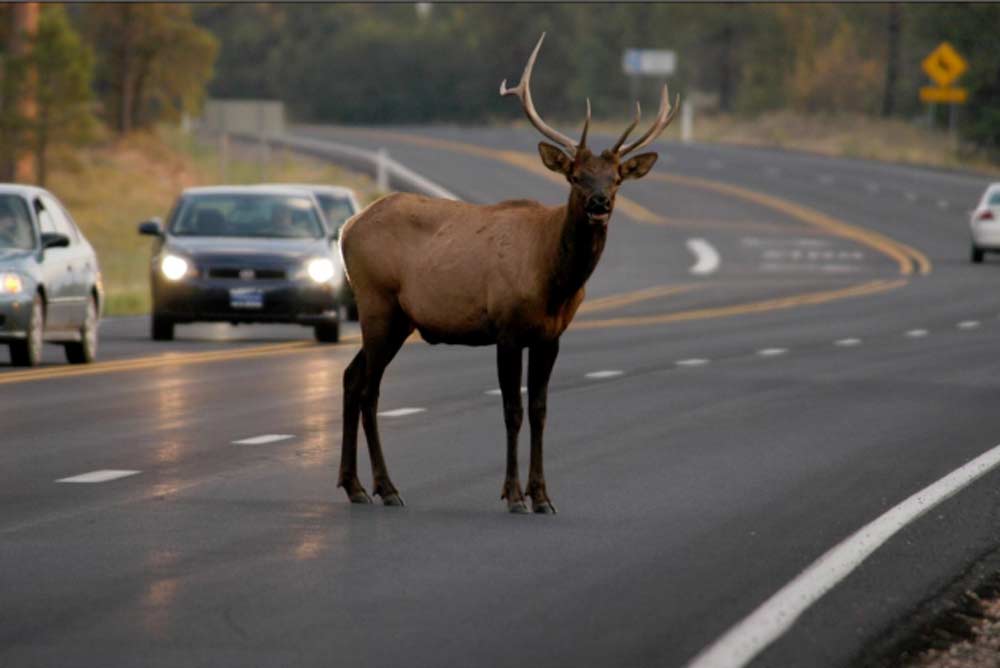It is easy to crisscross our nation thanks to a series of highways, state and county roads, but those roadways in elk country are dangerous and often deadly for elk and other wildlife just trying to make it to the other side. The Rocky Mountain Elk Foundation recently took part in a national discussion, advocating for natural infrastructure to improve safety for drivers and wildlife alike.
“As we gain a better understanding of the migratory corridors of big game, we are identifying the habitats, pinch points and barriers that limit their ability to thrive in the various seasons and life cycle stages. Sometimes those barriers are highways,” said Ryan Bronson, RMEF director of government affairs during the virtual briefing hosted by the Congressional Sportsmen’s Foundation. “Overpasses and underpasses that accommodate elk and deer also benefit smaller wildlife including reptiles and pollinators.”
According to Bronson, vehicle-wildlife collisions kill approximately 200 people and exponentially more animals every year. Those incidents also cost $8 billion annually. State Farm ranks West Virginia as the number-one state for wildlife collisions (1 in 37 drivers filed a claim in 2020) followed by Montana (1 in 47), Pennsylvania (1 in 51), South Dakota (1 in 53) and Michigan (1 in 54). The majority of vehicle-wildlife collisions are with deer. Those incidents with larger animals such as elk and moose are even more dangerous and deadly.
RMEF provided past and current funding in support of fencing and overpass projects in several states including one overpass currently under construction in southwest Colorado between Durango and Pagosa Springs. Despite those projects, much more support is needed on more of a national scale.
“Differing versions of a Wildlife Crossing Pilot Program were considered in the last Congress. We supported then, and still support now, funding of at least $250 million over five years for competitive grants to states, tribes and local governments,” added Bronson. “We are grateful for the Senate Committee on Environment and Public Works’ leadership championing big game crossings last Congress and are hoping that the same language will be reintroduced this year.”
(Photo source: Arizona Game and Fish Department)
